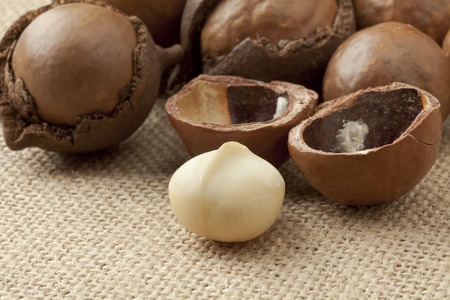
Palmitoleic acid is an unusual omega-7 monounsaturated fatty acid. Chemically, it is also known as (9Z)-hexadec-9-enoic acid.
The acid is commonly found in glycerides in human adipose tissue but is commonly distributed throughout the body. The liver is a particularly strong source of palmitoleic acid. It is syntheised in the body from palmitic acid catalysed by the enzyme Stearoyl-CoA desaturase-1.
Dietary Sources Of Palmitoleic Acid
Most common sources are breast milk, various animal fats, vegetable and marine oils.
A couple of nut oils are excellent sources of this must-have fatty acid. One nut in particular provides high levels of the fatty acid – macadamia (17% by weight). Sea Buckthorn is a another good source especially in its oil (19 to 29% by weight). The Durian also contains the acid in its fat (13.55%).
Health Benefits Of Palmitoleic Acid
The presence of palmitoleic acid in the diet is mainly associated with good cardiovascular health although the results are inconclusive for reducing the risk of heart disease. The acid is needed for cardiac growth and improving the tension in blood vessels.
In muscle, it is seen to raise insulin sensitivity and in the pancreas, to help with beta-cell proliferation. In total, this means a lower risk and lower incidence of diabetes.
In it is not quite certain whether supplementing with palmitoleic acid would help reduce non-fatty acid liver disease and the related condition of NASH. It certainly helps with reducing lipogenesis or the production of fats which are stored in and around the liver, and as we already mentioned, it helps raise insulin sensitivity. The benefit might also be to reduce the incidence of metabolic syndrome diseases. We know that it promotes fat production in adipose tissue as opposed to the liver.
It is associated with some types of cancer but the research is too early to say how.
The synthetic pathway for synthesis of this fatty acid in macadamia is described although research is still ongoing (Hu et al., 2019).
References
Hu, W., Fitzgerald, M., Topp, B., Alam, M., & O’Hare, T. J. (2019). A review of biological functions, health benefits, and possible de novo biosynthetic pathway of palmitoleic acid in macadamia nuts. Journal of Functional Foods, 62, 103520 (Article).
Leave a Reply